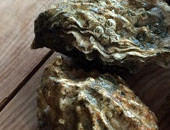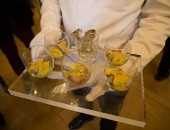Even though the season begins with dry and mild weather/climate, the champenois saying “in Saint-Vincent, winter dies or regains strength” would prove itself true; from 23 of January, the day after the winegrowers’ festival, the temperature lowered and the wintry weather moved in. Snowfalls were frequent from the end of January through mid-March clearly hindering the pruning/cutting back of the vines.
Grey skies and the wind dominate spring with alternating cold and mild days, sometimes even almost summery. Despite the disturbed weather, the registered rainfall since Autumn 2004 shows a persistent deficit of 40% less than the average.
The budding, late by four to six days compared to the past ten years is generally observed the 15 April for chardonnay, the 17 April for Pinot Noir and the 19 April for the Meunier. The beginning of the countryside is scarred by bud-eating insect damage.
A short summer period in the beginning of May quickly results in three to four outspread leaves but the vegetation is halted by the low temperatures and doesn’t bounce back until the end of May after a strong warm spell. Although suffering from the lack of warmth, the vineyard however experiences neither ice nor devastating hailstorms.
The flowering/full bloom is recorded the 15 June for the Chardonnay, the 17 for the Pinot Noir and the 19 for the Meuneir. It will roll out quickly in the dry and beautiful weather, in very favourable conditions.
The first signs of mildew appear the end of June given the abundant rains (up to 100 mm and even 150 mm from 20 June to 10 July in certain areas) accompanied by strong heat. Some severe localised mildew attacks will also persevere into August, affecting mainly the Cote de Bar.
The chaotic weather conditions from the beginning of September inspire strong concerns regarding the maturing of the grapes. Thankfully, from the 10th, cool weather, dry and sunny moves in that will remain throughout the harvest. The night-time fresh air slows the centre of blight seen here and there on the Pinot noirs and the meuniers and favours the accumulation of sugars.
The dates of the beginning of wine harvest stretch from the 9 through the 22 September. The maximum harvest authorised is fixed at 13,000 kilos per hectare of which 1,500 kilos are reserve wines.
The average potential degree of the musts is 9.8 % vol and total acidity of 7gH2SO4/l. The average yield is 12,880 kg per hectare.
The chardonnay juices appear particularly exceptional this year while those of the Pinot Noirs and Meunier are promising. The oenologists already announce subtle and aromatic wines.
[Source : Comité Interprofessionnel du Vin de Champagne]










